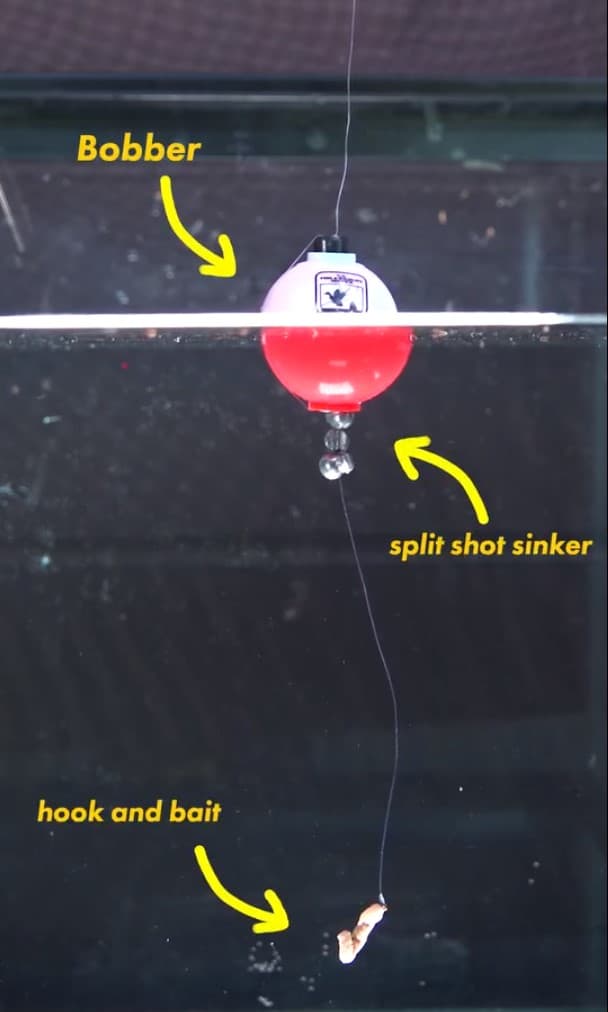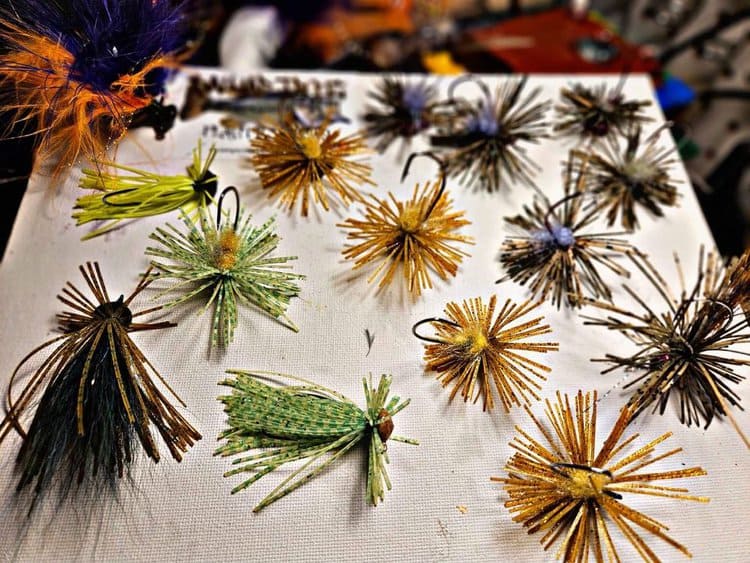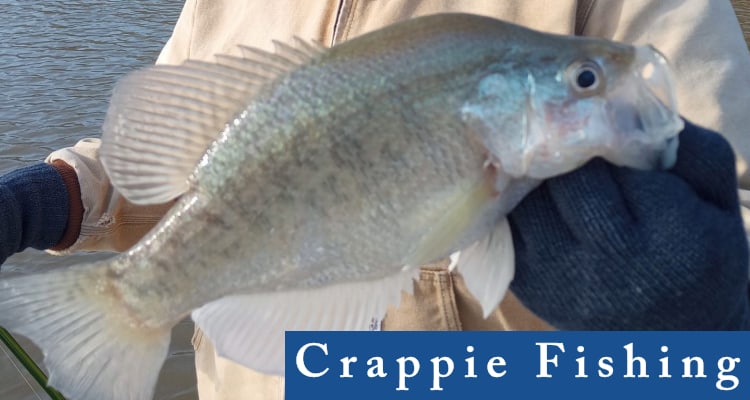Crappie is a popular and widely sought-after freshwater fish, belonging to the sunfish family. There are two primary species: the Black Crappie and the White Crappie. These fish are known for their distinctive silvery-green to golden color and their speckled patterns, which make them a delight to catch and observe. They can be found in many parts of North America, thriving in lakes, rivers, and reservoirs.
Crappie are known for their active feeding habits, which makes them relatively easier to catch compared to some other fish species. They are especially popular among beginner anglers because they respond well to a variety of baits and lures, including jigs, minnows, and small crankbaits. Their preference for sheltered environments, such as around submerged structures like logs, weed beds, and docks, provides anglers with specific locations to target.
In this guide, we’ll cover the ideal fishing setup, best bait and lures, effective fishing techniques, the best times and places to catch crappie, and tips for beginners. We’ll also delve into the best fishing gear and tools for a successful crappie fishing experience.
Crappie Fishing Setup
Crappie fishing requires a setup that combines sensitivity and lightness to effectively target these popular fish. The most common tackle for crappie involves a light or ultralight spinning rod and reel combination. This setup is ideal due to its sensitivity, which is crucial for detecting the often subtle bites of crappie, and its lightness, which is necessary for presenting baits and lures in the delicate manner preferred by these fish.
The best fishing setup for crappie consists of a 5 to 7 feet rod and a 1000 to 2000 size reel, spooled with 4 to 6 pound test line. This combination gives the angler the ability to feel the light bite of the crappie and to manage the fish effectively without the risk of breaking the line.
The preferred rig for crappie is a jig and bobber setup, with jigs ranging from 1/16 to 1/8 ounce, suspended under a float or bobber. The bobber not only aids in casting the lightweight jig but also acts as a visual strike indicator. The depth at which the jig is fished can be easily adjusted by changing the position of the bobber on the line, allowing the angler to target crappie at different depths.

Best Bait For Crappie
Crappie are opportunistic feeders, primarily consuming small fish, insects, and crustaceans, which influences the choice of bait and lures for successful fishing.
The best live bait for crappie is undoubtedly minnows, reflecting their natural diet. Minnows, either fished alone or in combination with a jig, are highly effective. When using minnows, hook them through the lip or back, ensuring they remain lively and attractive to crappie. Another popular live bait option is small insects like crickets or grasshoppers, especially in areas where these insects are abundant.
In terms of artificial lures, crappie are particularly responsive to small jigs and plastic grubs. Jigs ranging from 1/16 to 1/8 ounce are the most effective, mimicking the size and movement of the prey crappie naturally hunt. These can be used with or without a bobber, depending on the depth at which the crappie are feeding. Soft plastic grubs or tubes, often 1 to 2 inches in length, in colors like white, yellow, or chartreuse, are highly attractive to crappie. These are usually rigged on a small jig head and can be fished with a slow, steady retrieve or a more erratic, twitching motion to mimic the movement of baitfish.

Another effective crappie lure is the small spinner, which creates vibrations and flashes in the water, attracting crappie through both sight and sound. Crappie can also be caught using small crankbaits and minnow imitators, especially when they are actively feeding on small fish.
In summary, the best baits for crappie include live minnows and insects, as well as artificial lures like small jigs, plastic grubs, spinners, and small crankbaits.
Crappie Fishing Techniques
The most common and effective techniques to catch crappie are vertical jigging, casting and retrieving jigs, bobber fishing, spider rigging, and trolling with crankbaits. Each has its own setup and ideal conditions which is explained below.
Vertical Jigging
Vertical jigging is a highly effective technique for crappie, especially when they are holding in deeper water or around structures like brush piles, submerged trees, or docks. This involves lowering a jig straight down into the water and gently bouncing it up and down. Typically, a light spinning rod with a 1/16 to 1/8 ounce jig is used. This method is most effective during the colder months when crappie are deeper and less active, as it allows you to present the bait directly in front of the fish with minimal movement.
Casting and Retrieving Jigs
This technique is ideal for covering a lot of water and is particularly effective in shallower areas or when crappie are spread out. Using a light spinning setup, cast a small jig, usually 1/16 to 1/8 ounce, and retrieve it slowly. The key is to mimic the movement of the crappie’s natural prey, so a slow and steady retrieve with occasional pauses or twitches often works best. This method is highly effective in the warmer months when crappie are more active and feeding in shallower waters.
Bobber Fishing
Bobber fishing is a classic and effective technique for crappie, particularly suitable for beginners or those fishing with children. It involves a simple setup with a light line, a small hook baited with a minnow or jig, and a bobber. The bobber is adjusted to set the bait at the desired depth. This technique is effective in a variety of conditions but shines in shallower waters or when crappie are suspended at a specific depth. It allows for a more passive approach, making it ideal for relaxed fishing sessions.
Spider Rigging
Spider rigging is a more advanced technique that involves using multiple rods fanned out around the front of the boat. Each rod has a bait or jig set at different depths. This method is particularly effective for locating and targeting schools of crappie in open water. It requires a boat equipped with rod holders and a good understanding of the water body and crappie behavior. Spider rigging is most effective in pre-spawn and spawn periods when crappie are on the move and can be found in various depths.
Trolling with Crankbaits
Trolling is a technique where you slowly move your boat to pull lures through the water. Small crankbaits that mimic minnows or other small fish are effective for crappie. This technique is particularly useful for covering a lot of water and finding active fish. It works well in open water and during periods when crappie are scattered. A moderate action rod with a light line is ideal for this technique, allowing the crankbaits to dive and move enticingly through the water.
Best Time To Catch Crappie
Understanding the best times to fish for crappie can significantly increase your success rate. Here are some key points to consider:
- When do Crappie Spawn: Crappie typically spawn in the spring when water temperatures reach about 56-64°F (13-18°C).
- Best Time of Day to Catch Crappie: Early morning and late evening are the best times. During these periods, crappie are more active as they feed in lower light conditions, which offer cooler water temperatures and more abundant prey.
- Best Time of Year to Catch Crappie: Spring and fall are the most productive seasons. In spring, crappie move to shallow waters for spawning, making them more accessible, while in fall, they feed actively to prepare for winter.
Spring
Spring is an excellent time for crappie fishing as they move to shallower waters to spawn. The best times to catch crappie in spring are early morning and late afternoon. During this period, use techniques like casting and retrieving jigs in shallow areas or around spawning beds. Bobber fishing with live minnows near cover such as brush piles or submerged structures can also be highly effective.
Summer
In summer, crappie tend to move to deeper, cooler waters during the day and are less active. The best fishing is usually early in the morning or at dusk. Vertical jigging in deeper waters or trolling with small crankbaits can be successful techniques. Look for crappie around deeper structures like drop-offs or submerged timber.
Fall
Fall is another prime time for crappie fishing, as they feed aggressively to prepare for winter. They often return to shallower waters, making them easier to target. The best times are early morning and late afternoon. Casting jigs or using a bobber and minnow setup around structures and in shallower bays or inlets can yield great results.
Winter
Crappie fishing can still be productive in winter, especially in milder climates. They are typically found in deeper waters. The key is to fish slowly, as crappie are less active in cold water. Vertical jigging with small jigs or minnows near the bottom or suspended at the depth where crappie are holding can be effective.
Night Fishing
Crappie can be successfully targeted at night as well. They are attracted to light, which draws in baitfish. Using a submersible light can be a great way to attract crappie. At night, fish near light sources such as dock lights or use a floating light. Live bait like minnows or jigs with glow-in-the-dark features work well. Focus on areas with structure where crappie may be hiding or hunting.
Where To Find Crappie
Crappie thrive in a variety of water bodies, including lakes, ponds, and rivers. The depth at which to fish for crappie varies; they are often found in 3-6 feet of water in spring and fall, moving to deeper waters of 10-20 feet or more in the heat of summer and in winter.
Fish finders are highly effective in locating crappie, especially in deeper waters, as they help identify structures and depths where crappie congregate.
Lakes
Lakes are prime habitats for crappie. In lakes, crappie often congregate around submerged structures like fallen trees, brush piles, and weed beds. The best setup for lake fishing is a light spinning rod and reel combo with 4-6 pound test line. Using small jigs or minnows under a bobber works effectively. Vertical jigging near structures or casting around weed beds are successful techniques. During spawning in spring, fishing shallower waters near the shore yields good results.
Ponds
Ponds, especially those with ample cover like weeds, stumps, or docks, can be excellent for crappie fishing. In ponds, crappie are usually found closer to the surface, especially in the early morning or late evening. A light setup with a small jig or live bait like minnows is ideal. Casting near structures or using a bobber rig to suspend the bait at the right depth is effective. Ponds are great for shore fishing, making them accessible for anglers without boats.
Rivers
Rivers offer a dynamic environment for crappie fishing. Look for crappie in slower-moving parts of the river, such as backwaters, sloughs, or areas with submerged logs or brush. In rivers, using a light to ultralight spinning setup with jigs or minnows is effective. Casting near structures or drifting with the current can yield good catches. Pay attention to changes in the river flow and depth, as crappie locations can shift accordingly.
Shore Fishing
Shore fishing for crappie is common and productive. Look for areas with access to deeper water, structures, or vegetation. Docks, piers, or fallen trees along the bank are hotspots. A simple setup with a light rod, a small jig, or a live bait rig works well. Casting your line and retrieving it slowly or using a bobber to keep your bait at the desired depth can be very effective from the shore.
Tips To Catch Crappie For Beginners
- For beginners, a light to medium-light spinning rod and reel combo is ideal. It’s versatile and easy to handle.
- Use a 4-6 pound test monofilament line. This size offers a good balance between strength and sensitivity.
- Live minnows are among the best baits for crappie. Small jigs (1/16 to 1/8 ounce) in various colors are also effective and easy to use.
- For live minnows, use a #2 or #4 hook. Hook the minnow either through the lips or just behind the dorsal fin for the best presentation.
- Attach a small bobber to your line to keep the bait at the desired depth. The bobber also acts as a visual bite indicator.
- Keep bait near structures. Crappie are often found near submerged structures like brush piles, fallen trees, and docks. Cast your bait near these areas.
- Start with still fishing. This is a simple technique where you cast your line and wait for a bite. It’s an easy way to get started and understand crappie behavior.
- Watch for the Bobber’s Movement. When a crappie bites, the bobber will twitch or go under. This is your cue to gently set the hook by lifting the rod tip up firmly.
- Crappie can be subtle biters. Be patient and watch your bobber or line for any signs of movement.
- Early morning or late evening are typically the best times to catch crappie, especially for beginners.
- Practice casting to improve accuracy and distance. Being able to place your bait precisely can greatly improve your chances of catching crappie.
- Stay Quiet and Stealthy. Crappie can be spooked easily. Approach fishing spots quietly and avoid sudden movements.
- Always be aware of and follow local fishing regulations regarding licenses, size limits, and catch limits.
Best Crappie Fishing Gear And Tools
Here are recommendations for the best crappie fishing gear and tools, including fishing rod, fishing line, fishing reel, and fish finder.
Fishing Rod
The ideal fishing rod for crappie is a light to medium-light action rod, ranging from 5 to 7 feet in length. This rod type provides the necessary sensitivity to feel the light bites of crappie and the flexibility to properly cast small lures or jigs. Longer rods are also beneficial for covering more water and for jigging in deeper areas.
Fishing Line
A monofilament line with a test strength of 4-6 pounds is a perfect crappie fishing line. This line strength offers a great balance between being strong enough to handle the fish and thin enough to remain almost invisible to crappie in the water. Monofilament lines also have a slight stretch, which is advantageous in cushioning the light bites and preventing the hook from tearing out of the crappie’s mouth.
Fishing Reel
A lightweight spinning reel pairs well with the recommended crappie rod. The reel should have a smooth drag system and be capable of holding at least 100 yards of the chosen line. A good quality spinning reel allows for accurate and longer casts with light lures and provides an easy-to-manage setup for all skill levels.
Fish Finder
A fish finder is an essential tool for locating crappie, especially in larger water bodies or when fishing in unfamiliar areas. Choose a crappie fish finder with good resolution and sonar capabilities to identify structure, depth changes, and the presence of fish. GPS functionality is a bonus, as it helps in marking successful fishing spots and navigating lakes or reservoirs effectively.

